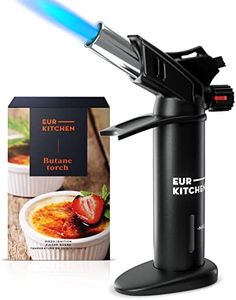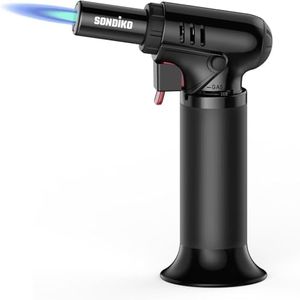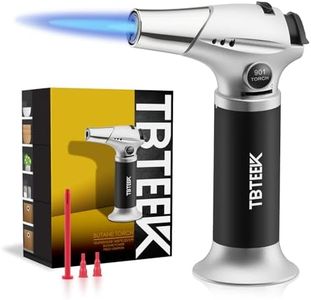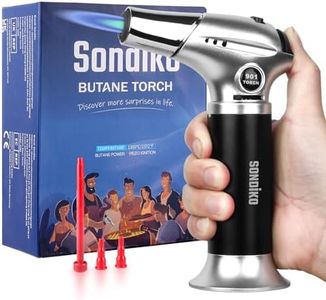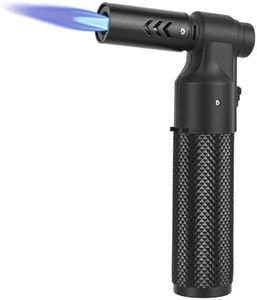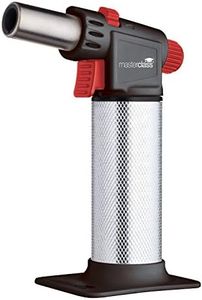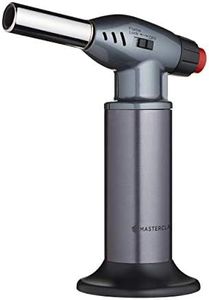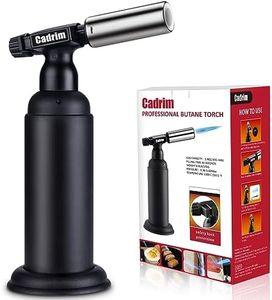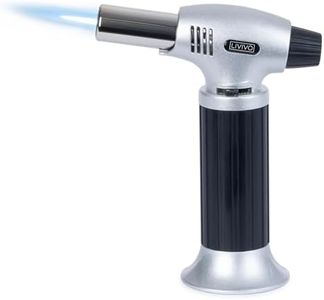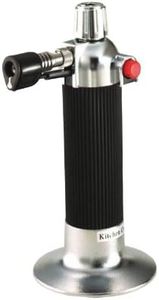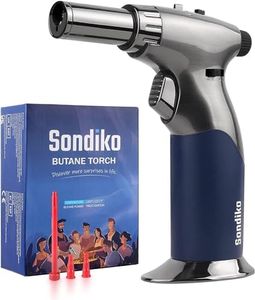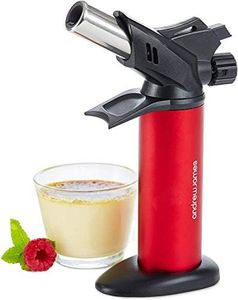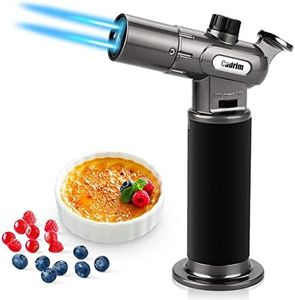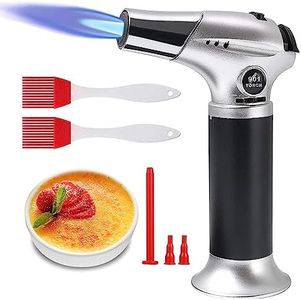We Use CookiesWe use cookies to enhance the security, performance,
functionality and for analytical and promotional activities. By continuing to browse this site you
are agreeing to our privacy policy
10 Best Cooking Blow Torches
From leading brands and best sellers available on the web.Recommended lists
Buying Guide for the Best Cooking Blow Torches
Choosing the right cooking blow torch can significantly enhance your culinary skills, whether you're caramelizing sugar on a crème brûlée, searing meat, or adding a finishing touch to your dishes. To find the best fit for you, it's important to understand the key specifications and how they align with your cooking needs. Here are the main factors to consider when selecting a cooking blow torch.Flame TemperatureFlame temperature refers to how hot the torch can get. This is important because different culinary tasks require different levels of heat. For example, caramelizing sugar or melting cheese might need a lower temperature, while searing meat requires a higher temperature. Cooking blow torches typically range from around 2,500°F to 3,000°F. If you plan to use the torch for a variety of tasks, a model with adjustable flame temperature is ideal. For occasional use or specific tasks, a fixed temperature torch might suffice.
Fuel TypeCooking blow torches generally use either butane or propane as fuel. Butane is more common for kitchen torches because it burns cleaner and is easier to find in small canisters. Propane torches can reach higher temperatures and are often used for more heavy-duty tasks. If you need a torch for delicate culinary work, butane is usually the better choice. For more intense applications, consider propane.
Ignition TypeThe ignition type determines how you light the torch. There are manual ignition torches, which require a separate lighter or match, and automatic ignition torches, which have a built-in ignition system. Automatic ignition is more convenient and safer, especially for frequent use. Manual ignition torches are typically more affordable and can be a good choice if you don't mind the extra step of lighting it yourself.
Size and WeightThe size and weight of the torch can affect how comfortable it is to use. A lightweight, compact torch is easier to handle and maneuver, making it ideal for precision tasks like caramelizing sugar. Larger, heavier torches might be more suitable for tasks that require prolonged use or higher heat. Consider how you plan to use the torch and choose a size and weight that feels comfortable for you.
Safety FeaturesSafety features are crucial when working with high heat and open flames. Look for torches with features like a safety lock to prevent accidental ignition, a flame guard to protect your hands, and a stable base to prevent tipping. These features can help ensure safe operation, especially if you are new to using a blow torch or plan to use it frequently.
Burn TimeBurn time refers to how long the torch can operate on a single fuel canister. This is important if you plan to use the torch for extended periods or for multiple tasks in one session. Torches with longer burn times are more convenient and reduce the need for frequent refueling. If you only need the torch for short, occasional tasks, burn time may be less of a concern.
